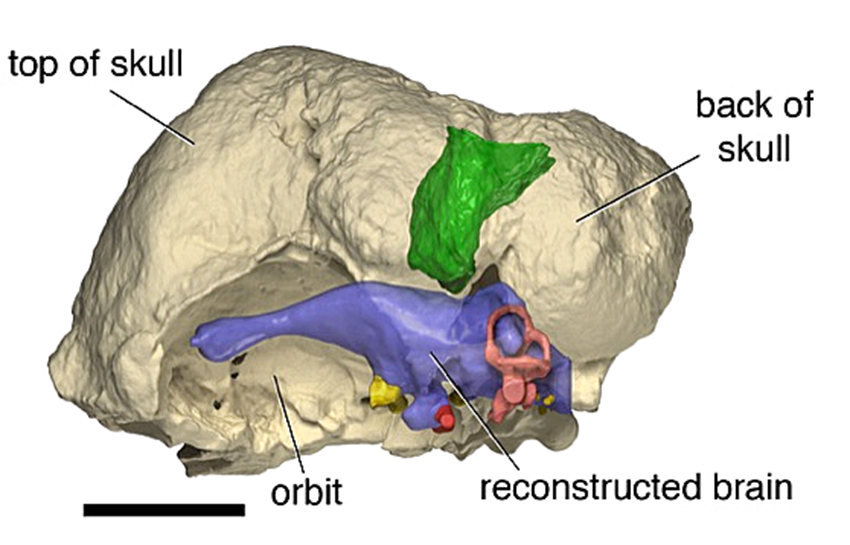UT researchers didn’t even have to leave campus to discover a new species of reptile — scientists identified the fossil of extinct reptile Triopticus primus last month using bones collected over 70 years ago for the Jackson School’s Texas Vertebrate Paleontology Collections.
The scientists worked in collaboration with paleontologists from Virginia Tech to publish a report on the new species in The Journal of Current Biology on Sept. 22.
Researchers named the species Triopticus primus, which means “the first with three eyes,” because of an indentation in the reptile’s head that resembles a third eye socket, and might be evidence of a pineal foramen.
According to the study, Triopticus was part of a large group of reptiles that roamed Texas around 230 million years ago. It predates the Triassic-Jurassic extinction event that wiped out many of the species living on the Earth at the time.
The researchers scanned the fossilized skull at the Jackson School’s CT lab to create 3D models of the skull.
“CT acts like a set of 3D X-ray images, so that we can not only see into spaces in bones, like into the brain cavity in the skull of Triopticus, but also see the structure of individual bones,” Michelle Stocker, lead author and Virginia Tech research scientist, said in an email.
Currently, the UT collection only has the skull of the reptile, and the conclusions of the study have been drawn without a full skeleton.
“It would be great to find more of the skeleton or to find another individual so that we can learn about how it moved and what it ate,” Stocker said. “Now we know a little more what bones to look for and in what age rocks to look so that we can target our search.”
Workers for the Works Progress Administration, a group that provided jobs for men and women during the Great Depression, collected the Triopticus fossil in 1940 near Big Springs, Texas.
“We wouldn’t have been able to study Triopticus at all if it weren’t for the efforts of the Works Progress Administration over 70 years ago,” Stocker said. “By carefully collecting fossils from the Triassic [period] of Texas in the 1930s and 1940s they were able to create an important collection that has benefited science for decades.” WPA workers brought in more fossils than researchers could analyze at the time, so new species continue to be identified. Stocker said the specimens have been well cared for by the Jackson School and, more specifically, Matthew Brown, director of the Texas Vertebrate Paleontology Collections and a co-author of the study.
“We can gain new insights into the history of life because specimens like Triopticus have been curated into museum collections like the one at UT Austin,” Brown said to UT News.
The UT Paleontology Collections house fossils from all over Texas, as well as fossils collected elsewhere using state and federal funds, according to the Jackson School website.
“These collections are the foundation of natural history research, and this new animal illustrates how exciting discoveries are continually made thanks to the forethought and investment of past generations,” Brown said. “It will be fascinating to see what the students of tomorrow find next.”
Medical laboratory science freshman Bridgett Winter said she thinks the Jackson School is doing a good job of supporting the University’s focus on changing the world through research. She said she was especially impressed with the work done by the Jackson School’s CT lab.
“I didn’t know UT had this kind of technology,” Winter said. “If other universities are using our machines, we must be doing something right.”















